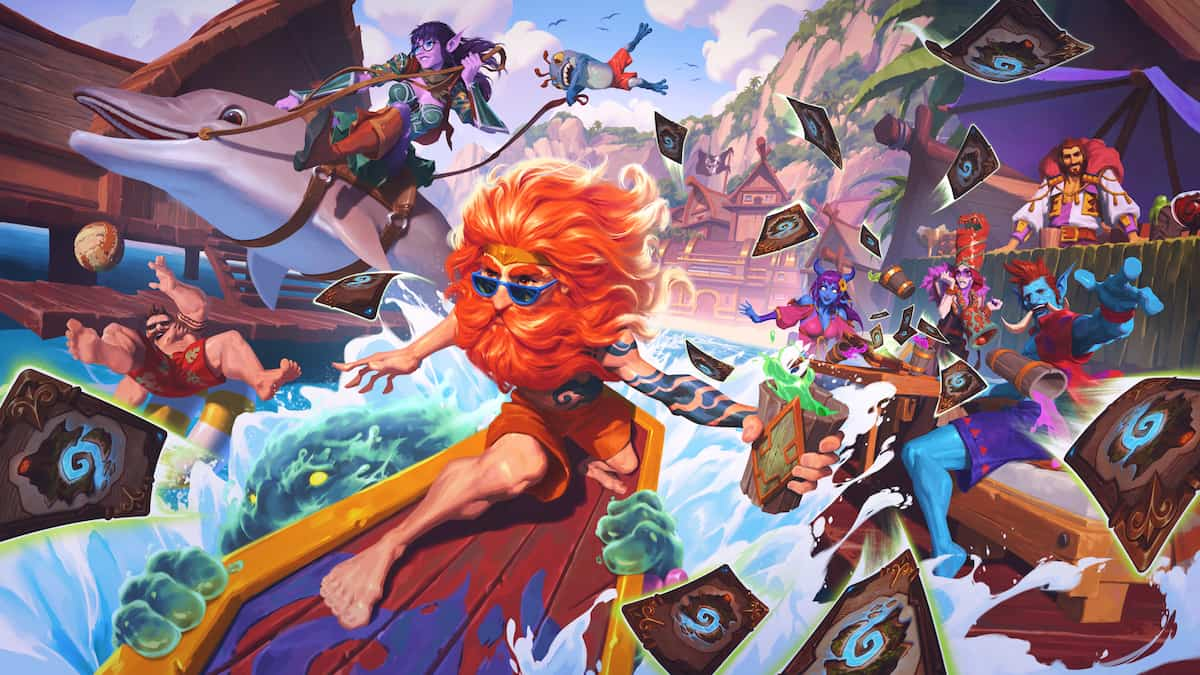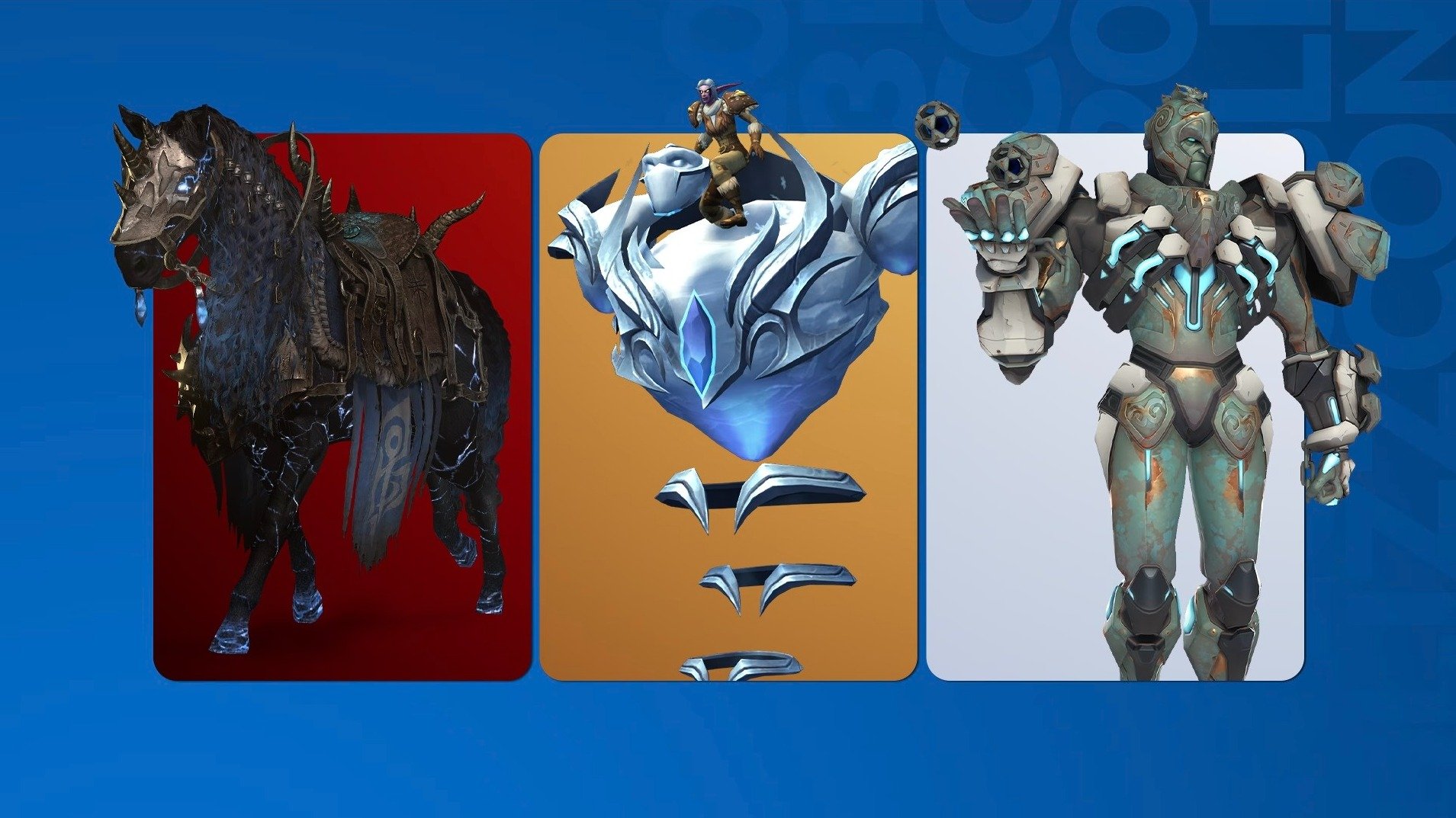My name is Thundyr, and this article forms part of my “Common Denominator” series, which looks primarily at decks using only Basic and Classic set common cards. These decks can be crafted from only a handful of total cards at the start of a new account but are strong enough to reach rank 20 and beyond.
Knowing the Metagame
Strategies for players with very few cards from expert sets are typically limited to Tempo or Midrange builds reliant on the strength of certain ubiquitous Basic Set cards: Shattered Sun Cleric, Gnomish Inventor, Chillwind Yeti, Sen’jin Shieldmasta, Boulderfist Ogre, and Stormwind Champion. While I will still use many of them in these decks (they are ubiquitous for good reason) , if we want to have an advantage over players with similarly weak collections, and therefore climb the ladder faster each month to hit rank 20 and guarantee that end of season reward chest, then we can take advantage of the lack of diversity between decks played at these ranks.
Essentially we will be facing the same strategy regardless of class, and our opponent will expect the same, so when we do something different we have the chance of gaining a match-winning advantage right from the start. This same technique applies when facing players with stronger collections and decks. They will know from the quantity and type of Basic set cards you play that your deck is weaker than theirs, and therefore that theirs should win. But complacency is its own enemy and the unexpected direction taken by an atypical “beginner” deck can upset the rhythm of the stronger deck long enough to snatch the win.
Taunt Druid
Perhaps the best description of the Druid class is that it exemplifies choice. From the cards like Druid of the Claw that provide a choice in how the card resolves when played, to the hero power that adds armour as well as attack, the Druid walks the line between defence and aggression. Individual cards like Savage Roar and Ironbark Protector also highlight a class that can be shaped around alternate strategies. In this case we are going to focus on the more defensive approach – the Taunt Druid.
What’s the Plan?
Newer players may find the subtleties of aggressive decks difficult to grasp at first, not because they are complex but because decision-making is of critical importance to a strategy with no come-back potential. With the Taunt-based Druid, however, we leave the decisions in the hand of the opponent, forcing them to find solutions to the problems we present, and if they cannot we win by default.
The spells Innervate and Wild Growth give temporary and permanent boosts to our mana crystal count respectively. They allow us to either accelerate into a powerful minion that will cause consternation or a direct card advantage loss for our opponent, or to be able to play stronger threats each turn due to having access to extra crystals all the time. We will use these tools to play an ‘accelerated’ Tempo game, playing the sequences of 3-4-5, 4-3-4 or 2-5-4 cost minions at the time when our opponent is playing a sequence of minions costing 2-3-4, giving us an on-board advantage at the cost of a card. Maintaining that advantage is our goal.
The Opening
The cornerstone of the Taunt strategy is Wild Growth. We want to play it as soon as possible in every game, either on turn 2 without the Coin or on turn 1 by using the Coin first. Although it does constitute a tempo loss, as we play a card that does not affect the board (either removing or contributing to removing an opposing minion, or playing a minion of our own), the extra crystal will “change the rules of the game” by allowing us to play a 4-drop when our opponent will only have 3 crystals on their turn. Wild Growth is the equivalent of having the Coin every turn, a valuable advantage through the turns in the race to 10. If we draw Wild Growth after turn 6, using it for the crystal is just a waste; wait until you have 10 crystals before playing it, when it will turn into an Excess Mana.
Innervate too is a powerful ally. With the Coin on turn 1 we can use it to play a 4-drop such as Chillwind Yeti (to apply immediate pressure to the opponent) or the lesser Gnomish Inventor which will replace one of the lost cards with its Battlecry. If we wait a turn first we will be able to have a 5-drop on turn 2. Drawing it later (once perhaps we’ve used the Coin), Innervate allows a 6-drop when we have 4 crystals, so when our opponent plays his own Chillwind we can respond with Boulderfist Ogre, and if that seems unfair, well, that’s how the Druid rolls.
At a minimum we want to mulligan aggressively for Wild Growth and Innervate, keeping a 4-drop only when we have either or both of these. When we miss these ‘ramp’ cards we face the prospect of a long wait until turn 4 before our first meaningful minion, so we want to have the best chance of getting them by binning the whole hand. Against certain, more aggressive classes such as Warlock, Hunter and the Year of the Kraken-inspired Shaman, it is desirable to hang onto Claw or Wrath as these can deal with their early minions at a time when we cannot yet dominate the board with our “phat”.
The Midgame
Assuming things go according to plan and we gain some ramp or can keep the board relatively clear of enemy minions with our spells and/or the hero power, then we can start to out-muscle our opponent from 4 crystals on. Each turn we can play progressively-stronger minions, with the vast majority having Taunt and therefore forcing the opponent to deal with them before having the opportunity to attack our health directly. Especially against aggressive decks we should look to be as aggressive as possible with the hero power in picking off low health minions, because even though that guarantees one ‘hit’ from them it also guarantees only one such hit and eliminates the minion as a target for future temporary or permanent buffs. Even when one can’t afford to attack with the hero power, never forget that it provides 1 point of armour, which can tip the balance when it comes to staying out of ‘reach’ – that level of health where the opponent can burst us down for all our remaining health in a single turn.
Particularly strong in the Tempo game is the concept of making good trades, either in utilising a spell and/or buffing minion to allow a weak, damaged or cheap minion to destroy one costing more mana or of higher value. With Taunt Druid we have to be careful of losing value to an opponent ‘trading up’ by using such combos to kill our Taunts, so careful use of Swipe, Wrath, Earthen Ring Farseer and Darkscale Healer can destroy our opponent’s board, leaving us with one or more strong minions to dominate into the endgame.
The Druid Player’s Simple Rule: Keep it simple and keep your Taunts healed – it is better to waste a small, non-Taunt minion in making trades than to have all your minions damaged and therefore vulnerable to a board wipe. Use the hero power aggressively in the mid-game to kill off enemy stragglers and protect with the free armour, rather than risk losing the board.
The Tempo Player’s Simple Rule: Play a minion on turns 2 or even 1 through 4, and use all your mana every turn. Trade-up as often as possible by sacrificing smaller or cheaper minions to eliminate larger or more expensive to cast ones, allowing your larger minions to dominate the board.
The Endgame
Having asserted and maintained dominance during the mid-game we continue to play large minions whenever our board loses minions, and because everything has Taunt we can pick and choose which opposing minions to kill and with which minions to go to the opponent’s face. With each minion weighing in with sizeable damage the opponent’s health can drop with alarming rapidity, setting up a lethal attack within 2 or 3 turns. Swipe and the hero power can handle the rest.
Deck Rating: easy rank 19.

None shall pass!
Upgrading the Deck : ~1000 Dust Budget
Once we’re among the better decks we will begin to notice some deficiencies with the Taunt Druid plan. Specifically this relates to “playing one threat per turn”. Although the Druid can establish an advantage in mana through Wild Growth, the deck is designed around exploiting this larger mana count by running a top-heavy set of threats. Typical Tempo decks will run many minions costing 2, 3 or 4 and only a few of 6 or more – the Druid will tend to start at 4 cost and work up to 8 or even 10 with similar efficiency. The problem is that decks with lower curves begin to play multiple threats per turn as the game progresses (or a spell plus a minion), whereas the harsh costs in the Druid deck will tend to limit us to a minion and perhaps a use of the hero power. The minions are obviously powerful and many can withstand such opposing pressure, but if we get behind on the board sometimes it’s really hard getting back into the game because we play a minion that dies and we continue to take facial damage.
A contributing factor here is that Druid lacks a strong mechanism for drawing cards and therefore keeping its hand full of threats. Although Nourish is excellent at 5 cost for 3 cards, in a deck of minions costing 4 or more it often takes our entire turn to play, a significant loss of tempo in the mid-game! Sometimes we just cannot find the right moment to play it, but we desperately need to draw something specific to resolve the board position in our favour. However it provides such a massive role in replenishing our hand that it is more than a capable replacement for Fen Creeper.
One of the ways of alleviating the problems with Nourish is Azure Drake, which not only gives us a card but provides +1 Spell Damage and a 4/4 body for only 5 mana; one of the most efficient minions in the game and therefore high on my craft list. Its combination with Swipe at 9 mana (or with the TWO damage plus draw a card Wrath at 7) has ended the dreams of many an aggro player. They replace the Darkscale Healers as we seek better consistency from an already sound strategy.
We also supplement the card draw by switching Gnomish Inventor for Loot Hoarder, which provides an early “speed bump” for opposing faster decks but keeps the card draw ticking over. This is especially useful for the games where we did not draw the ramp spells. Having the Hoarder will allow us to cut one Claw for a second Earthen Ring Farseer to maintain the advantage that healing our Taunts gives us. Depending on the opposition faced in general one can cut the other Claw for another middle or end game minion, for instance Ancient of War or Ragnaros the Firelord if one is fortunate to own such.
Although Lord of the Arena is a decent Taunt, Sunwalker provides far more headaches and is therefore a direct improvement. The same goes for switching Starfire for Starfall. Although Starfall cannot provide 5 damage to the opponent’s face nor does it replace itself, it does have an alternate casting mode that deals 2 damage to all opposing minions, which is very useful against aggressive decks that repeatedly flood the board (and with a Drake deals a crushing 3 damage to all enemy minions).
Deck Rating: rank 16.

High health, four-attack minions – the perfect storm against Priest











Published: Aug 23, 2016 09:08 am